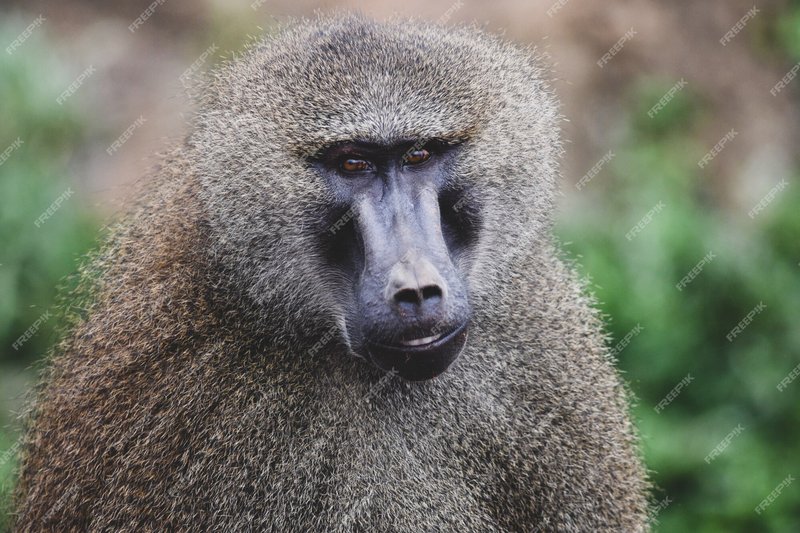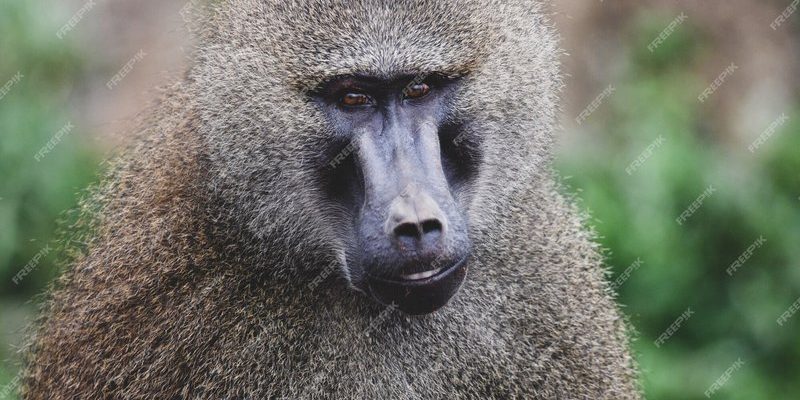
Imagine wandering through a sun-drenched savanna or a lush forest, spotting a troop of these baboons going about their day. That’s the kind of setting where Guinea baboons thrive. Their habitat is a blend of grassy plains, woodlands, and rocky outcrops, which provides everything they need: food, shelter, and an area to socialize. So, let’s dive into the specifics of where these lively creatures call home.
Guinea Baboon Overview
Before we get into their habitat, let’s take a moment to understand what makes Guinea baboons unique. They belong to the *Papio* genus and are particularly known for their large size and distinctively long, dog-like faces. They’re also quite social, living in troops that can range from a few individuals to a hundred or more. Their social structure is fascinating and plays a significant role in their survival, but it’s deeply tied to where they live.
Guinea baboons are primarily found in West Africa, particularly in countries like Guinea, Senegal, and Mali. These habitats offer a mix of open grasslands, forest fringes, and scrublands, which are perfect for foraging and socializing. They have a knack for adapting to various environments, but they’re particularly fond of areas where they can find fruit, seeds, and other plant materials.
Habitat Types
So, where do Guinea baboons thrive? Their habitat types can be quite diverse. Here are the key environments where you might spot these fascinating primates:
- Wooded Savannahs: These areas combine open grasslands with scattered trees, making them ideal for foraging and finding shelter.
- Rocky Outcrops: Baboons often live near rocky formations that give them a vantage point to spot danger while also providing a safe place to rest.
- Forested Regions: Although they mostly prefer open areas, Guinea baboons do venture into forested regions, especially where food sources are abundant.
- Coastal Areas: In some regions, you can find them along coastal zones, where they have access to both land and some marine resources.
These various habitats illustrate how adaptable Guinea baboons can be. Here’s the thing, being able to switch between different environments allows them to maximize their food intake and social interactions, which ultimately contributes to their survival.
Distribution of Guinea Baboons
When talking about distribution, it’s crucial to note that Guinea baboons are somewhat picky about where they hang out. They primarily inhabit the western regions of Africa, and here’s a closer look at those areas:
1. Senegal – Many troops of Guinea baboons roam the national parks and reserves here, such as Niokolo-Koba National Park, which offers a lush habitat rich in vegetation.
2. Guinea – Their namesake country boasts diverse landscapes that are perfect for these sociable primates. They can often be found near rivers, where water sources are plentiful.
3. Mali – In Mali, Guinea baboons adapt to various environments ranging from savannas to forested areas, showcasing their flexibility in habitat preferences.
4. Ivory Coast and Liberia – They also inhabit parts of these countries, although their populations are less dense compared to Senegal and Guinea.
In each of these locations, the baboons establish territories that can cover several square kilometers, allowing them to move freely in search of food and mates. This territorial behavior is essential for maintaining their social structure and hierarchy.
Social Structure and Habitat Interaction
The social life of Guinea baboons is heavily influenced by their habitat. Troops can consist of males, females, and young ones, and they often engage in social grooming and playful behavior. These interactions help strengthen bonds and maintain group dynamics, which is crucial for survival.
In their habitats, Guinea baboons establish home ranges that they patrol regularly. The quality of their habitat significantly impacts their social structure. For instance:
– In areas with abundant food, you might see larger troops because there’s enough for everyone to eat.
– Conversely, in regions where food is scarce, smaller troops might form as competition increases.
This flexibility in social structure is part of what makes Guinea baboons so fascinating. Honestly, if you ever get the chance to observe them in their natural habitat, you’ll get to witness the subtle nuances of their interactions and how they navigate their environment.
Threats to Their Habitat
While Guinea baboons are adaptable, their habitats are under threat from human activities. Deforestation, agriculture, and urban expansion are just a few challenges they face. Here’s what you need to know:
– Habitat Loss: As forests are cleared for farming or development, Guinea baboons lose their natural homes. This can lead to conflicts with humans, especially when the animals raid crops in search of food.
– Poaching: In some areas, baboons are hunted for bushmeat or captured for the pet trade, further threatening their populations.
– Climate Change: Changes in weather patterns can influence the availability of food and water sources, making it more difficult for these baboons to thrive.
Understanding these threats is crucial for conservation efforts aimed at protecting Guinea baboons and their habitats. By raising awareness about their importance in the ecosystem, we can help ensure their survival for generations to come.
Conservation Efforts
There are ongoing conservation efforts to protect Guinea baboons and their habitats. Many organizations work tirelessly to safeguard these animals and their environments. Some initiatives include:
– Protected Areas: Establishing national parks and reserves helps to provide safe habitats for Guinea baboons. These areas limit human encroachment and allow ecosystems to thrive.
– Community Outreach: Educating local communities about the importance of baboons and their role in the ecosystem can help foster coexistence. When people understand the value of these animals, they’re more likely to protect them.
– Research Programs: Studies focused on Guinea baboon behavior and ecology provide important insights that can inform conservation strategies. Knowledge gained can lead to better protection measures and habitat restoration projects.
Working together, conservationists and local communities can make a significant impact on the future of Guinea baboons and ensure their habitats remain intact.
In summary, Guinea baboons have a fascinating home in the diverse landscapes of West Africa. From open savannahs to forest edges, they thrive in various habitats, demonstrating an impressive adaptability. Their social structures, influenced by their environment, make them intriguing creatures to observe.
However, as human activities continue to threaten their habitats, it’s essential that we take action to protect these remarkable animals. By understanding where they live and how their habitats support their way of life, we can contribute to the conservation efforts necessary to ensure their survival. So next time you think about Guinea baboons, remember that behind their playful antics lies a complex world that deserves our respect and protection.

